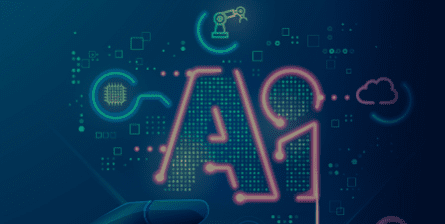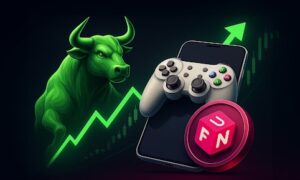In recent years, we have witnessed the increasing use of artificial intelligence (AI) in various sectors. From the financial industry (using AI to help detect financial frauds) and the healthcare sector (using AI to predict the spread of a disease), this intelligent software have now stepped into an untouched territory — the creative field.
AIs have “infiltrated” an industry thought to be uniquely human. After all, no matter how intelligent, machines do not possess a human’s artistic and inspired touches.
Even tech-reliant professionals in the creative industries (e.g., graphic designers and image/video editors) have full agency and only use software to aid them.
However, advances in AI and machine learning (ML) technologies have made the creation of generative AIs possible. These AIs can execute tasks that traditionally only humans can do (e.g., creative writing and creating digital arts).
This development caused quite a stir in the creative industry. Will generative AIs do to creatives what automation did to blue-collar workers in labor-intensive roles? Or are these intelligent software a godsend that will help creatives do more work with less effort?
The rise of AI in the creative industry
History of creative AI: Where it started
AIs capable of creating novel content (instead of just analyzing existing ones) have been years in the making. The first revolution in AI technology (in the context of this article) can be traced back to the convolutional neural networks (CNNs) breakthrough in 2012.
A combination of CNNs, Imagenet (a dataset of labeled images used to train AI algorithms), and graphics processing units (GPUs) paved the way for creating AlexNet, the world’s best visual classifier to date.
Challenges in creating creative AIs
However, natural language processing (NLP) limitations still hinder more advanced deep learning and generative capabilities of AIs. NLP refers to a software’s ability to comprehend and operate with human language instead of codes.
Teaching AIs to understand how language works is magnitudes more complex than training them to recognize visual elements.
No matter the context or other elements in an image, a traffic light will always be a traffic light. However, “Let’s eat, Grandma” is vastly different from “Let’s eat Grandma” — simply because of a single punctuation.
You can imagine how much more complicated it gets once other languages (plus their grammar rules) are factored in. But recent advances in ML and deep learning made generative AIs like OpenAI’s ChatGPT possible.
Creative fields that rely on AI
Various creative fields leverage the capabilities of generative AIs. These fields include:
Graphic arts
AI-generated arts are somewhat controversial subjects. Debates of what is and isn’t art notwithstanding, image-generating AIs are used in some publications for cover images and other visual aids.
While there are still heated debates about the validity of AI arts and artists, it’s undeniable that the range of things you can do with AI art generators is stounding. From book illustrations to brand logos, AIs can produce in minutes what takes hours for humans.
More advanced AIs can even create digital art with the same style as renowned artists like Picasso or Van Gogh.
These types of AI can be used together with traditional digital art tools, such as Adobe Illustrator, Photoshop, and Sketchbook Pro.
Creative and technical writing
Even writers use AIs to aid in writing blogs, social media posts, and other written content. They can even use generative AIs to write articles almost indistinguishable from human text.
Aside from writing articles, these AIs help overcome writer’s block and generate ideas writers can use as pegs and writing prompts.
Below are three ways how AI can help content writers use their time more efficiently:
Generating new ideas for articles
AIs can be taught to create original texts by analyzing large volumes of data, including text from other websites. The resulting texts are often surprisingly readable and require little tweaking to suit the writer’s purpose and intent.
Improving existing texts
Suppose you want to write an article about “How the BPO Industry Helps Companies Save” and already have an existing article on the same topic.
In that case, a text generator can enhance it by adding more information or improving its structure. This would save you time while also increasing the quality of your writing.
Optimizing existing text
There are AI tools that help writers identify keywords in their articles and recommend related ones. These suggestions help writers optimize their content for search engine crawlers and rank higher in search engine results pages (SERPs).
AIs like Grammarly also point out spelling and grammar mistakes and suggest improving text structure.
AIs used in creative fields
As AIs become more prevalent in the creative sector, professionals in the industry witness an increase in the range of AI applications available to them.
These are some of the AI systems used in the creative industry:
ChatGPT
ChatGPT is an AI-powered tool designed to help generate text based on user input. Users can input keywords, sentences, or phrases, and ChatGPT will generate texts similar in style and content to the original.
OpenAI, an AI research laboratory, developed this technology using deep learning to generate natural language text.
OpenAI Playground
Like ChatGPT, OpenAI Playground was developed by OpenAI. As the name suggests, it lets users “play” on its platform and experiment with AI algorithms and AI-powered writing assistants.
The playground relies on the user’s prompt input to generate texts or other creative works.
Dall-E
Another OpenAI creation, Dall-E is an image generator that uses text prompts to create images from scratch. For example, inputting the text “A man petting a dog” will show a man playing with a dog.
Midjourney
Midjourney is an art-generating AI accessed through the chat platform Discord. This AI is fairly easy to use, even for beginners.
With Midjourney, users can generate up to four different images based on a given prompt. Users can input prompts by entering a command in discord. (e.g., typing “/imagine” followed by the user’s description of what they want to make).
Holly+
Holly+ is an AI-generated deepfake of musician Holly Herndon’s voice. The AI merges the musician’s voice with that of her partner to produce an artificial female voice based on the audio samples of their voices.
Users can upload song tracks or other audio into Holly+, which will play back using Herndon’s robotic vocals.
AI and the creative industry: Looking ahead
AIs have received a mixed reception from the creative community. Some welcome the opportunities they present. Some resent their development and fear AIs will soon make human creatives obsolete.
However, it is best to remember that AIs are not meant to be the end-all and be-all of the creative sector. Rather, these tools are meant to aid human professionals in becoming more efficient and making their jobs easier.
Business-wise, some companies see AIs as another opportunity to cut down costs by replacing human workers with them. While this may look good in theory, it just wouldn’t fly in the real world.
Despite the efficiency and undeniable speed of AIs, human agency is still indispensable in many operations. For instance, Google stated that AI-generated content goes against its guidelines, and the company’s teams are authorized to act against these if they find any.
With humans working in tandem with AIs, these contents can be “humanized” to make them compliant with guidelines.
Fortunately, businesses can still find cost-cutting opportunities and leverage the power of AIs without risking penalties. Companies can hit two birds with one stone by partnering with third-party contractors who use AI tools.
These contractors are often business process outsourcing (BPO) firms operating in developing countries like the Philippines and India. Through outsourcing, businesses can cut down salary costs and overhead expenses. Additionally, they’ll get to access the AI tools their partner BPO companies use.

































